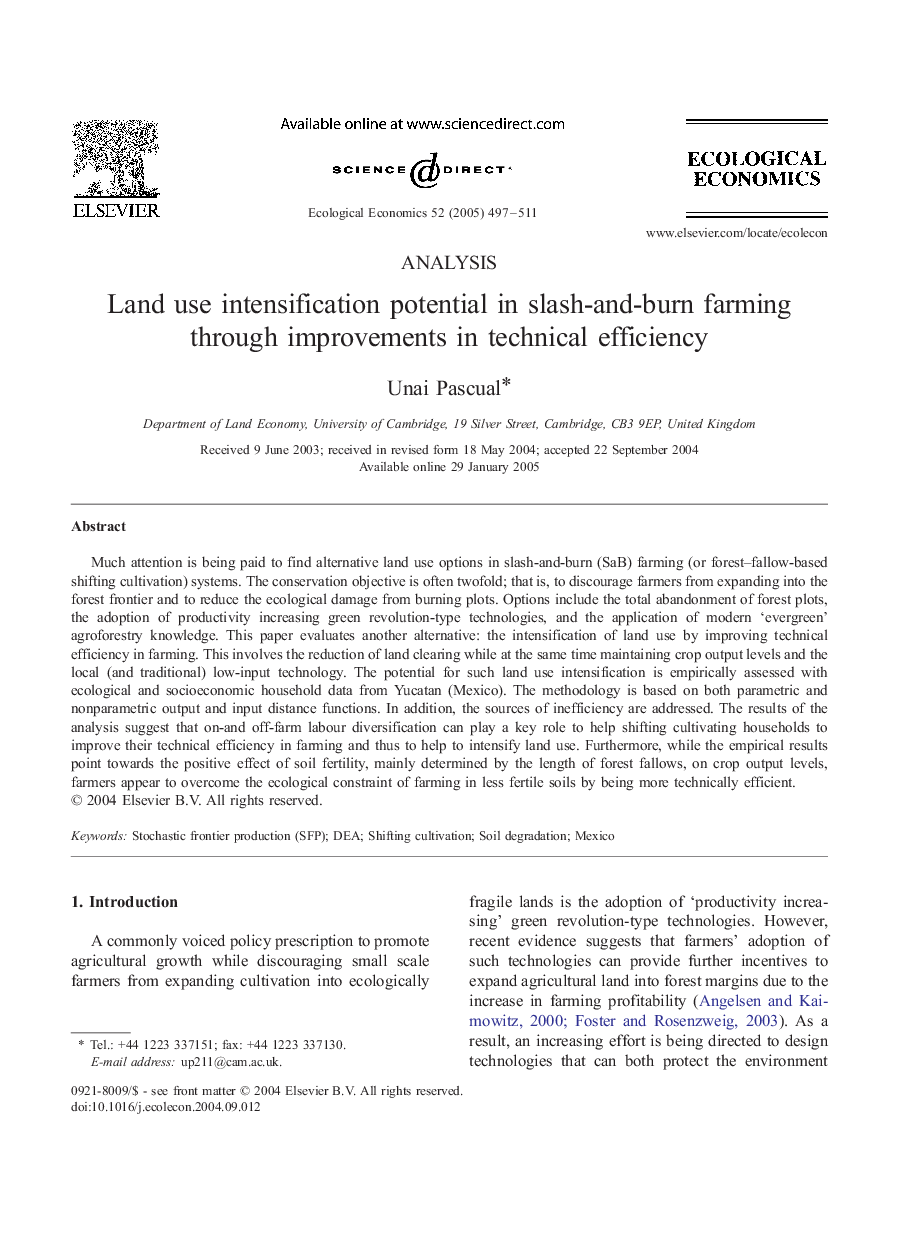| Article ID | Journal | Published Year | Pages | File Type |
|---|---|---|---|---|
| 9547648 | Ecological Economics | 2005 | 15 Pages |
Abstract
Much attention is being paid to find alternative land use options in slash-and-burn (SaB) farming (or forest-fallow-based shifting cultivation) systems. The conservation objective is often twofold; that is, to discourage farmers from expanding into the forest frontier and to reduce the ecological damage from burning plots. Options include the total abandonment of forest plots, the adoption of productivity increasing green revolution-type technologies, and the application of modern 'evergreen' agroforestry knowledge. This paper evaluates another alternative: the intensification of land use by improving technical efficiency in farming. This involves the reduction of land clearing while at the same time maintaining crop output levels and the local (and traditional) low-input technology. The potential for such land use intensification is empirically assessed with ecological and socioeconomic household data from Yucatan (Mexico). The methodology is based on both parametric and nonparametric output and input distance functions. In addition, the sources of inefficiency are addressed. The results of the analysis suggest that on-and off-farm labour diversification can play a key role to help shifting cultivating households to improve their technical efficiency in farming and thus to help to intensify land use. Furthermore, while the empirical results point towards the positive effect of soil fertility, mainly determined by the length of forest fallows, on crop output levels, farmers appear to overcome the ecological constraint of farming in less fertile soils by being more technically efficient.
Related Topics
Life Sciences
Agricultural and Biological Sciences
Ecology, Evolution, Behavior and Systematics
Authors
Unai Pascual,
